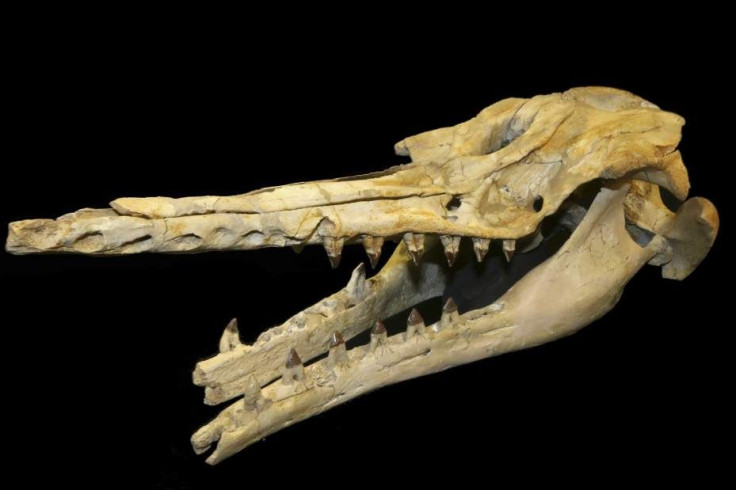28 Million-Year-Old Whale Skull Fossil Found, ‘Really Unusual’ New Species Shows Possible Origin Of Echolocation

The fossilized skull of a 28 million-year-old whale may be the oldest evidence paleontologists have of echolocation. According to analysis of the new species of toothed whale, Cotylocara macei looked similar to modern-day dolphins and lived in shallow marine environments. It also had a deep cavity on the top of its head that would have stored air during dives and may have reflected sound.
“The anatomy of the skull is really unusual,” Jonathan Geisler, a professor of anatomy at the New York Institute of Technology College of Osteopathic Medicine and lead author of the study, said in a statement. “I’ve not seen anything like this in any other whale, living or extinct.”
According to researchers from the New York Institute of Technology, University of Texas at Austin and the College of Charleston, Cotylocara macei existed at the same time that toothed whales branched off from non-toothed whales on the evolutionary tree. The division occurred between 32 million and 34 million years ago. The discovery of the 28 million-year-old whale fossil pushes back the origins of echolocation to at least that era.
"The most important conclusion of our study involves the evolution of echolocation and the complex anatomy that underlies this behavior," Geisler said. “This was occurring at the same time that whales were diversifying in terms of feeding behavior, body size and relative brain size.”
The fossil of Cotylocara macei was actually discovered 10 years ago in a housing development in College Park, S.C. The ancient whale grew to about 10 feet long and had several distinctive features, including the air pockets in its sinus cavities.
“Its dense bones and air sinuses would have helped this whale focus its vocalizations into a probing beam of sound, which likely helped it find food at night or in muddy ocean waters,” Geisler said.
Echolocation, also known as bio sonar, is the use of high-frequency sounds to scout out prey in dark or muddy water. In toothed whales, the air cavities in their sinuses help them to form nearly unbroken sound beams that bounce off objects and reflect back into the air spaces between the whale's jaw. These sound beams are processed and create a “sound-based map of the world around them,” Live Science notes.
Geisler’s study was published March 12 in the journal Nature.
© Copyright IBTimes 2025. All rights reserved.






















